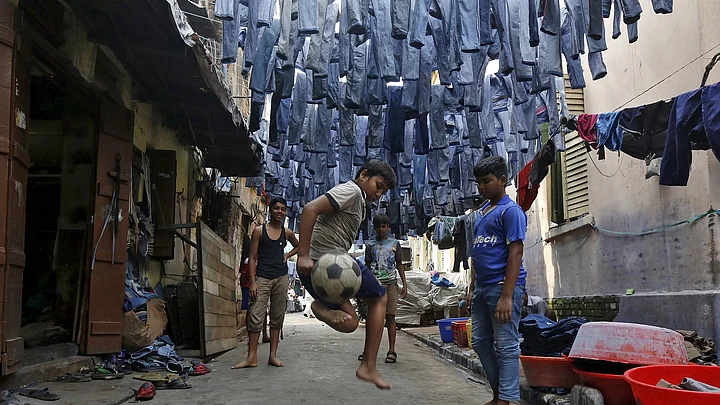You notice them when driving down from the airport. The double helix of blue and white LED bulbs. Coiled around street lamps, entwined around lamp-posts, enjoying pride of place at prominent intersections; their fairground twinkle, bathing the otherwise deserted night-streets of Kolkata with a surreal glow.
This is the most visible initiative of the Mamata Banerjee-led TMC government’s promise of urban transformation. Coming close on the heels of the trident or trishul lights -- that have become icons of a post-Red, Green city --the illumination drives are often the butt of jokes, especially the tall talk of turning Kolkata into London.
Yet there is no denying that today Kolkata is one of the best-lit cities in the country.
TMC’s popularity and if they have been able to deliver on the much-promised poriborton will be tested when the state goes to the polls starting April 4. Political pundits say that while in all likelihood the TMC will be voted back to power, it is likely to lose a sizeable chunk of its previous vote-share.
RIP Kolkata
The anti-incumbency factor, the recent Narada sting tapes and a general disenchantment with its failure to deliver on all that it had promised when it crested to power in 2011, are likely to play their part, muting the TMC’s victory.
The Bengal polls will see the unlikeliest bedfellows -- the Congress and the Left coming together for the first time. Irrespective of the outcome, the closely-watched contest will only highlight the saddest news of all: the death of its capital city.
As someone who grew up in this city and now works in Delhi told me on his recent visit: “The soul of Kolkata is dead.”
Crumbling Kolkata
It is an inevitability that has been echoed for long by the millions of Bengali diaspora in India and abroad. Those born in Kolkata or with roots here still make their annual pilgrimages. They buy houses, gorge at its pop-up eateries and soak up its unique pace of life, but somewhere something is missing this time around.
Even in the 1970s and well into the 1980s, Kolkata was still a charming and quaint city. The decline had set in. The flight of capital was near-complete. Young people were deserting in droves, yet there was something romantic and beguiling about the decay; the lingering decadence.
Locked in a time
warp, it was full of oddities and idiosyncrasies. Often quixotic, they were endearing at best
and annoying at worst: the Writers Building babu
who could be found dozing over files and drooling over his sumptuous working
lunch, the erudite scholar scoffing at corporate jobs and preferring his pure
perusal of knowledge.
Popular cinema and literature is rife with countless caricatures we are familiar with. The effete, Anglophile, cultured Bengali bhadrolok: he may nearly come to blows in the streets over the principle of paying a rupee more but would always be courteous to women.
He would dawdle over files and turn away capital but accepting speed-money was anathema -- inefficiency was tolerated but not corruption.
Pride in the Bengali heritage and way of life still ran high. He may have studied at the best British universities but he would still wear a starched dhoti-kurta and celebrate his ancestral Durga puja every year. Infrastructure was crumbling and streets filling up with refuse but theatre halls, movie shows and music recitals were always packed with the curious and the intellectual.
The city was in free fall but till the hard landing came everyone wanted to enjoy the view.
(Abir Pal is a journalist and communication professional based in Kolkata)
(To be concluded)
Also read:
From Glory to Ignominy: 200 Years of Presidency College, Kolkata
Battling Fire and Malls, an Ageless Kolkata Market Stands Resolute
(At The Quint, we question everything. Play an active role in shaping our journalism by becoming a member today.)
